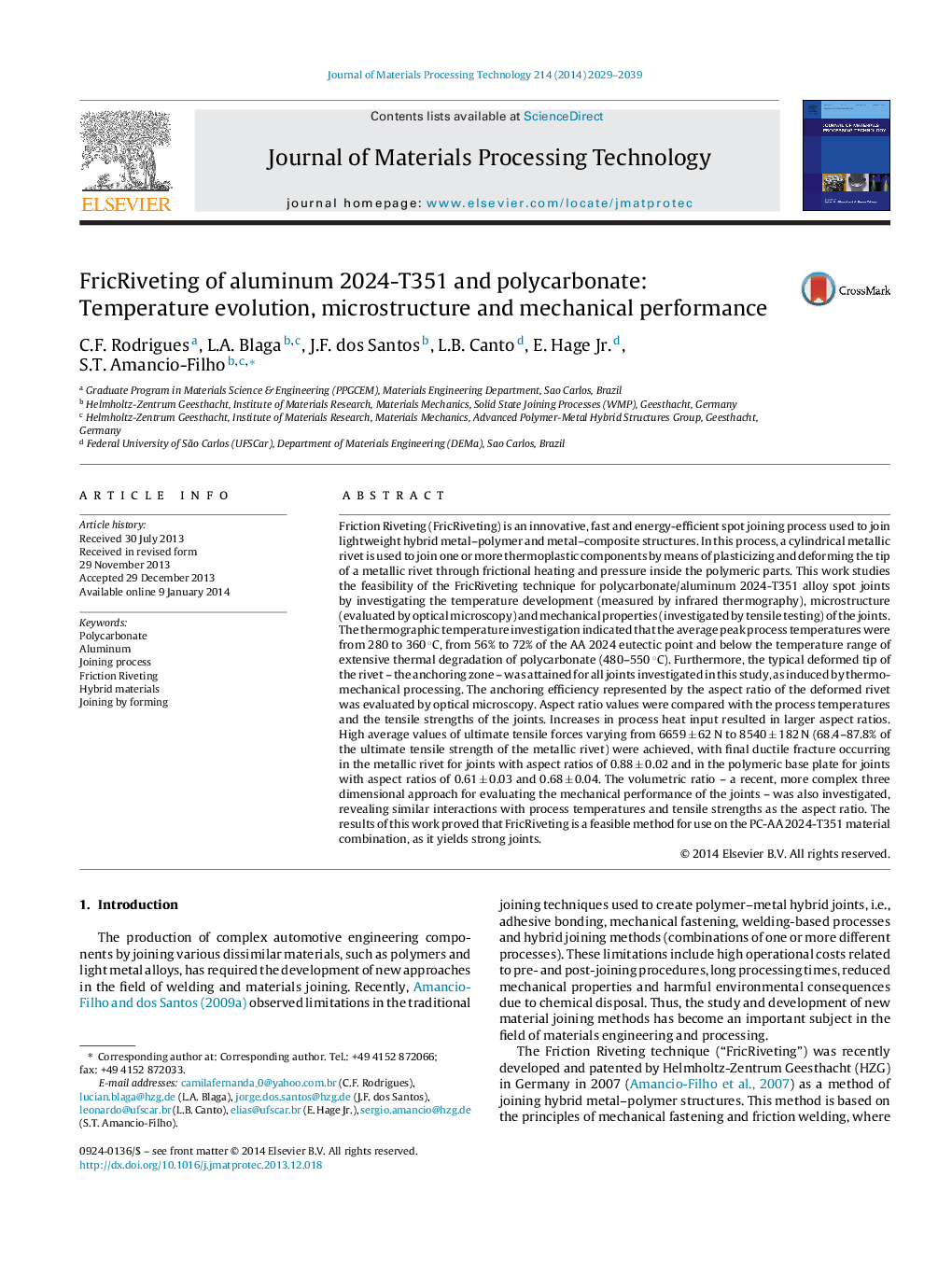| کد مقاله | کد نشریه | سال انتشار | مقاله انگلیسی | نسخه تمام متن |
|---|---|---|---|---|
| 790937 | 901898 | 2014 | 11 صفحه PDF | دانلود رایگان |

• FricRiveting on metallic-insert type joints of PC/AA2024-T351 was proved feasible.
• Joints with satisfactory mechanical performance were obtained.
• The ultimate tensile force was correlated with the anchoring performance.
• The anchoring efficiency of the rivets was evaluated using the Volumetric Ratio.
Friction Riveting (FricRiveting) is an innovative, fast and energy-efficient spot joining process used to join lightweight hybrid metal–polymer and metal–composite structures. In this process, a cylindrical metallic rivet is used to join one or more thermoplastic components by means of plasticizing and deforming the tip of a metallic rivet through frictional heating and pressure inside the polymeric parts. This work studies the feasibility of the FricRiveting technique for polycarbonate/aluminum 2024-T351 alloy spot joints by investigating the temperature development (measured by infrared thermography), microstructure (evaluated by optical microscopy) and mechanical properties (investigated by tensile testing) of the joints. The thermographic temperature investigation indicated that the average peak process temperatures were from 280 to 360 °C, from 56% to 72% of the AA 2024 eutectic point and below the temperature range of extensive thermal degradation of polycarbonate (480–550 °C). Furthermore, the typical deformed tip of the rivet – the anchoring zone – was attained for all joints investigated in this study, as induced by thermo-mechanical processing. The anchoring efficiency represented by the aspect ratio of the deformed rivet was evaluated by optical microscopy. Aspect ratio values were compared with the process temperatures and the tensile strengths of the joints. Increases in process heat input resulted in larger aspect ratios. High average values of ultimate tensile forces varying from 6659 ± 62 N to 8540 ± 182 N (68.4–87.8% of the ultimate tensile strength of the metallic rivet) were achieved, with final ductile fracture occurring in the metallic rivet for joints with aspect ratios of 0.88 ± 0.02 and in the polymeric base plate for joints with aspect ratios of 0.61 ± 0.03 and 0.68 ± 0.04. The volumetric ratio – a recent, more complex three dimensional approach for evaluating the mechanical performance of the joints – was also investigated, revealing similar interactions with process temperatures and tensile strengths as the aspect ratio. The results of this work proved that FricRiveting is a feasible method for use on the PC-AA 2024-T351 material combination, as it yields strong joints.
Journal: Journal of Materials Processing Technology - Volume 214, Issue 10, October 2014, Pages 2029–2039